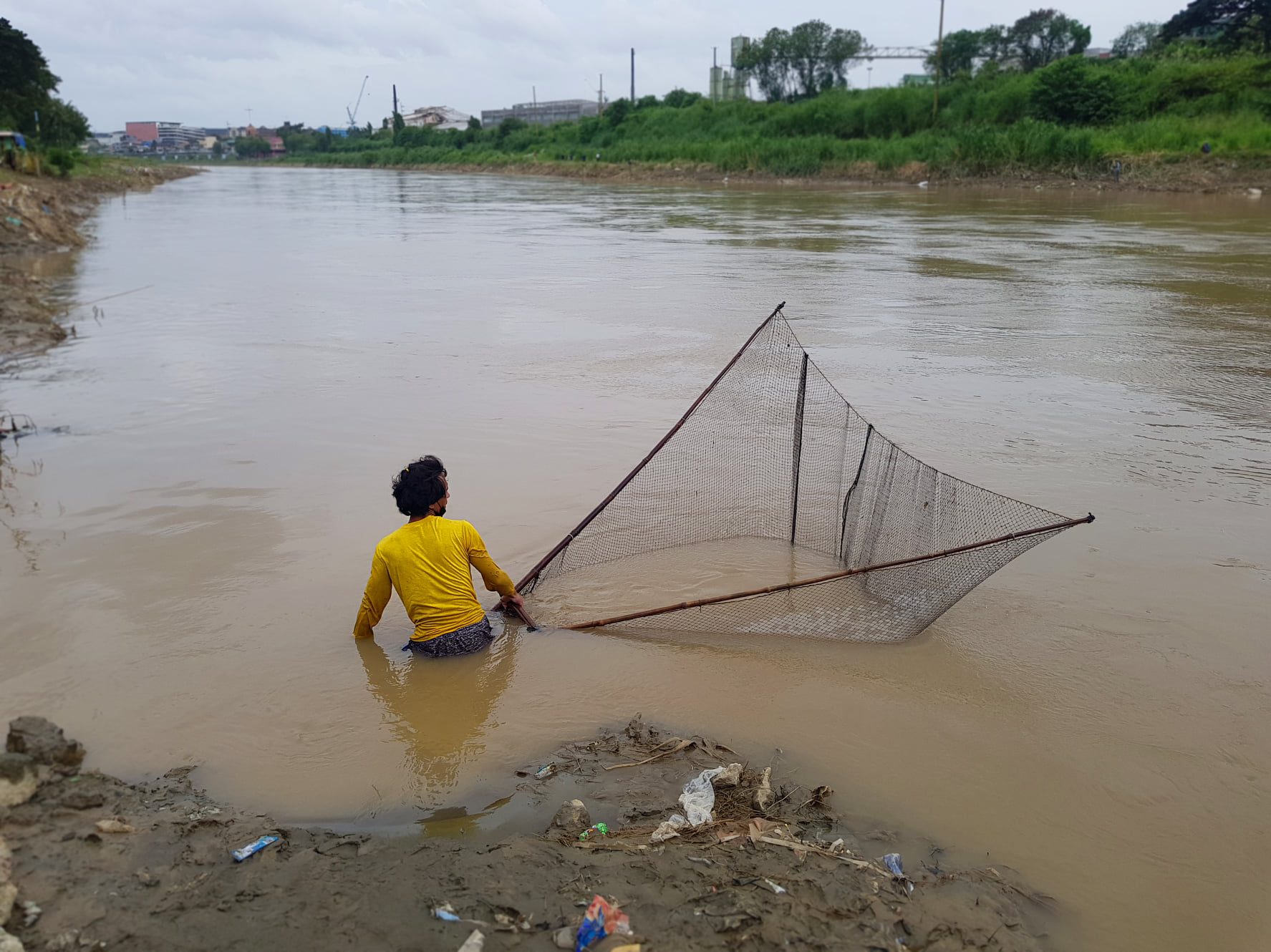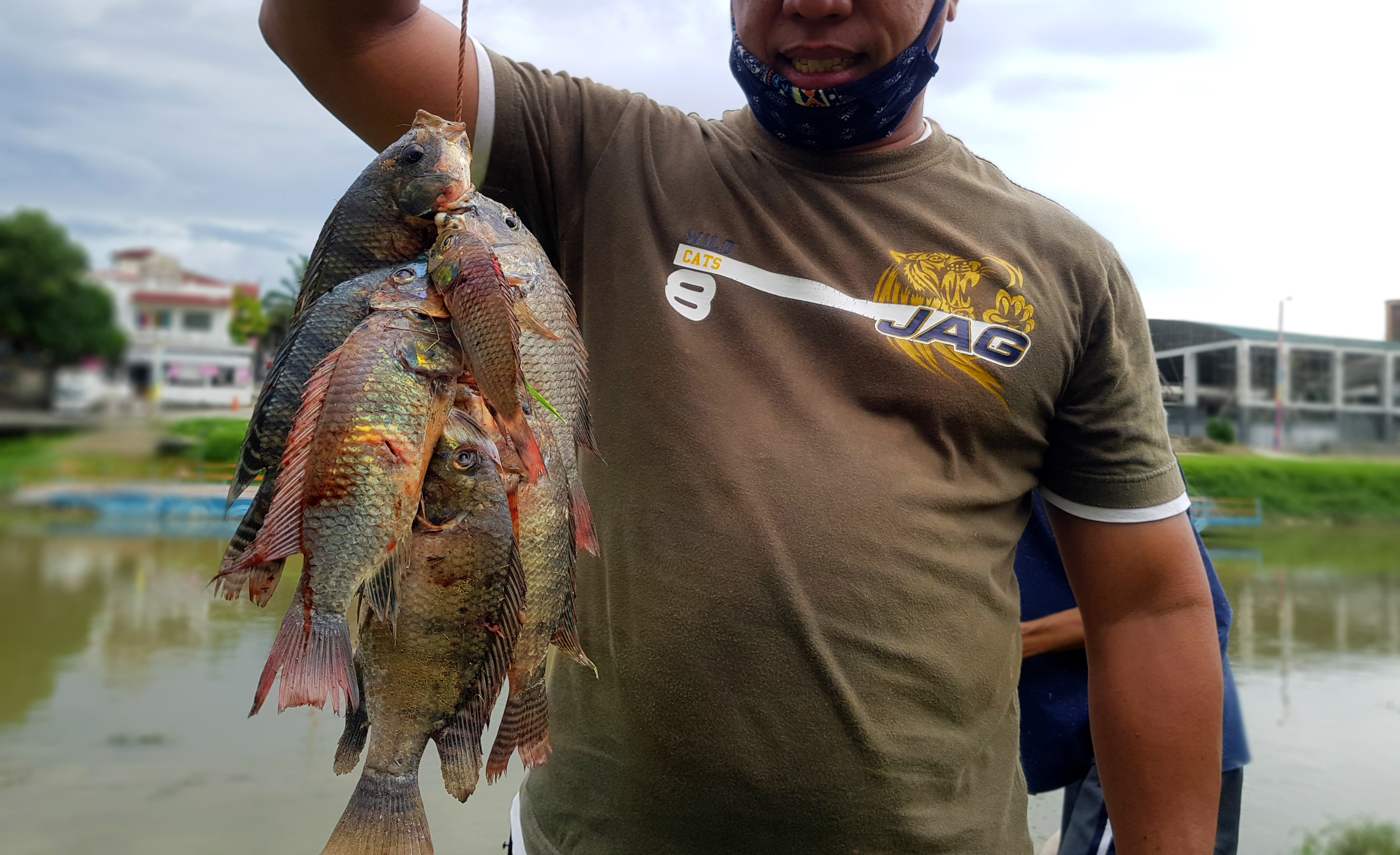SUMMARY
This is AI generated summarization, which may have errors. For context, always refer to the full article.

I have been visiting the Marikina River for over 20 years, first as a young student in UP and Ateneo, then as a youngish dad looking for natural places to bring my son.
In the late 1990s, the Marikina River still hosted native fish like bottom-dwelling biya, spearlike kasuswit, delicious ayungin, plus the amazing martiniko, a fish that can crawl on dry land using its fins.
Today, however, invasive fish have taken over the river. Hailing mostly from Africa, South America, and Indochina, introduced freshwater fish have successfully adapted to the Marikina River and the country’s other waterways – which is bad news for our native fish.
During my last trip down the river in early August, local fisherfolk caught black chin tilapia (called gloria or arroyo because, like the former president, the fish have cute little moles on their faces), Nile tilapia, African catfish, janitor fish, pangasius or cream dory, plus smaller fish like guppies and mollies that eat mosquito larvae. These fish have one thing in common: they aren’t native to the Philippines. In fact, the only native fish the fisherfolk caught were several kanduli, brackish water catfish usually caught along Manila Bay.

Our native fish are slowly disappearing. Sadly, this seems to be the norm and not the exception for many of our rivers and lakes, few of which have been spared from the introduction of exotics, which are imported for two reasons.
The first, of course, is for food. The pressing need to feed Filipinos has given rise to tilapia farms all over the archipelago. So successful are tilapia at colonizing waterways that most Filipinos now think the ubiquitous fish are native to the country. Newcomers to the country’s aquaculture industry include pangasius, giant catfish from Indochina marketed as “cream dory” to make the bland fish sound a bit more delicious.
The aquarium trade is the second entry point for invasive fish. Best exemplified by the janitor fish which are now becoming more common in our rivers, many fish are sold when they are young, cute, and still colorful. As many fish mature though, they lose their bright coloration and grow larger than most fish keepers think. Unwilling to kill their beloved grown fish, aquarists sometimes release them in local waterways and hope for the best, not knowing that fish from similar climates as the Philippines can survive and even breed in our waters.
So now our rivers and lakes host giant knifefish and snakeheads from Indochina, janitor fish from the meandering rivers of the Amazon, plus territorial cichlids from Africa. Goldfish, zebra danios, pacu, mollies, and guppies can now be caught from our canals.

What can happen down the line if these invasive fish continue to swim amok? Let’s take a look at what’s currently happening in Africa.
In East Africa’s Lake Victoria, the introduction of Nile perch has proven disastrous. In an attempt to “boost fisheries productivity,” the predatory fish were introduced to the lake in the 1950s. Growing over six feet long, they soon preyed on over 100 other fish species, practically wiping out 60% of the lake’s native cichlids in what may be the largest vertebrate extinction of the 20th century. As you read this, thousands of brightly-colored cichlids (one species alone is worth P2,000 apiece, compared to Nile perch which sells for P200 per kilogram) are being eaten hourly. The Philippines has already experienced a similar phenomenon, with at least 15 fish species declared extinct in Lake Lanao.
“This is not the first time we are witnessing the impacts of invasive alien species, which eat or outcompete native species,” said Theresa Mundita Lim, executive director of the ASEAN Centre for Biodiversity, an intergovernmental body that protects and conserves the ASEAN’s biological diversity.
“While the introduction of invasive alien species like tilapia or pangasius may be perceived as valuable for livelihoods, food production, or pest control, science-based assessments should be undertaken to determine if it leads to adverse impacts on the environment and biodiversity. We should ensure that this will not bring more harm in the long run. The extinction of native and edible fish species affects nutrition, food security, and dietary diversity. This leads to numerous local, national, and regional implications,” she added.
According to the ASEAN Biodiversity Outlook 2, ASEAN member states have identified 112 invasive alien species affecting forests, agriculture, and aquatic ecosystems.
“Given that we have all these introduced species already being considered as economically important and are being used in aquaculture, it is imperative that we focus our research and technology development on the breeding, propagation, and culture of our native species like ayungin, tawilis, maliputo, igat, and native hito, both for conservation and sustainable aquaculture,” explained Ma. Rowena Eguia, a geneticist from the Southeast Asian Fisheries Development Center/Aquaculture Department (SEAFDEC/AQD), an international body that promotes sustainable fisheries development in Southeast Asia.
Best Alternatives, a nongovernmental organization based in the Philippines, and VB Consultancy, a research firm based in Europe, are working to highlight the dangers of farming invasive species. Instead of farming potentially invasive foreign fish, the two groups are working to convince governments and private institutions to farm native species instead.
“In addition to conserving genetic diversity, farming native fish has many benefits,” said Jonah van Beijnen, head of VB Consultancy. “They are often best suited to local climates, giving them better chances of surviving adverse weather effects like storms or droughts. Local species can better resist both disease and parasites. Lastly, they are typically in demand and fetch better prices than invasive fish.”
Institutions like SEAFDEC/AQD, the Department of Agriculture’s Bureau of Fisheries and Aquatic Resources and National Fisheries Research and Development Institute, and the University of the Philippines are already experimenting with rearing and farming ayungin, tawilis, maliputo, and other native fish. This is a vital step in protecting and sustainably managing the populations of native fish still thriving in our country’s rivers and lakes.
Aside from stopping the deliberate introduction of invasive fish, the main solution is to find an economic use for them. Invasive karpa or carp, for instance, are now popularly sold as maya-maya and turned into ulo-ulo or fish head soup. Clown knifefish (which are super matinik or really bony) may not be sellable as fillets but can be turned into fishballs. Even janitor fish, with a little research, can be turned into wallets or animal feeds. The key is to create demand so fisherfolk can benefit from them.
Biodiversity, once lost, is gone forever. Though people will always pull fish (and the occasional softshell turtle) from the Marikina River and other waterways of the Philippines, I’d like to make sure that our kids can take their kids downriver to see the beauty and bounty of our native fish. – Rappler.com
Gregg Yan is the executive director of Best Alternatives, which promotes sustainable and science-based methods for biodiversity conservation, farming, and aquaculture.
Add a comment
How does this make you feel?





There are no comments yet. Add your comment to start the conversation.